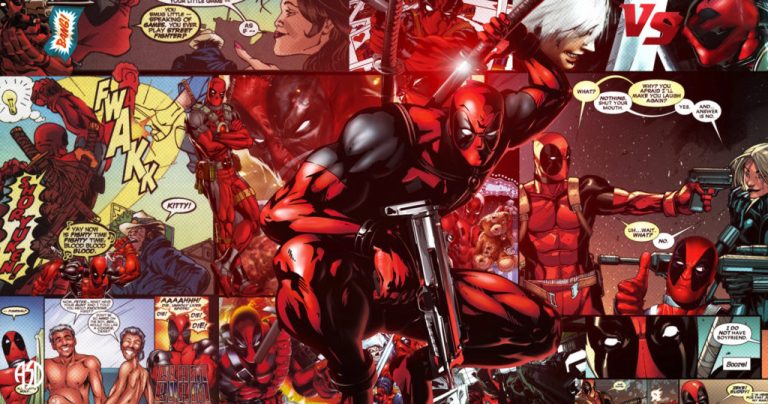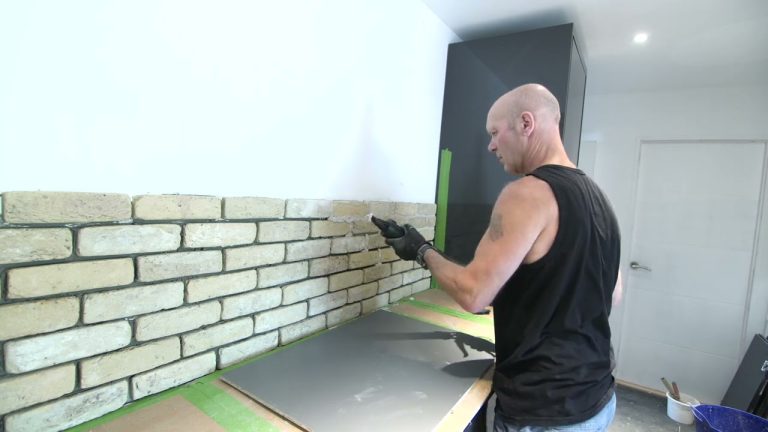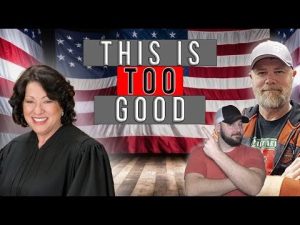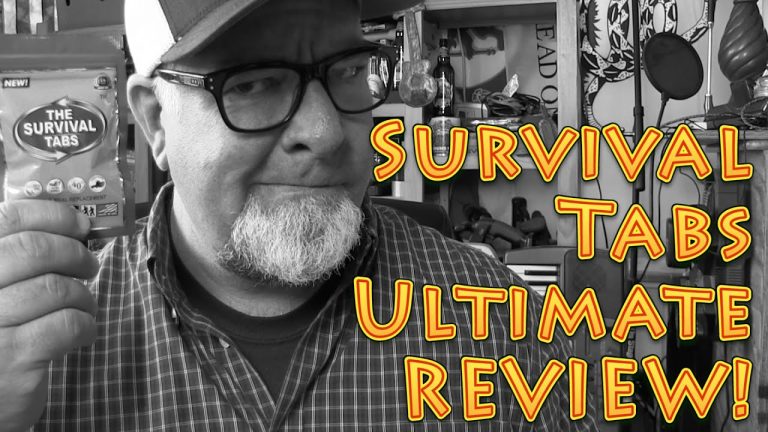New Mexico has charged actor Alec Baldwin with reckless manslaughter over his shooting dead cinematographer Halyna Hutchins on the set of the low-budget western movie “Rust.”
Baldwin’s immediate conduct that results in the firing of the bullet that killed Hutchins ought to be enough, on the legal merits, to support his conviction beyond any reasonable doubt–he (obviously) never checked to ensure there was no live ammo in the gun, he pointed what he knew to be a real gun directly at Halyna Hutchins, he manipulated the hammer of the gun while doing so, and he arguably manipulated the trigger at the same time. BLAM!
Prosecutors, however, want to introduce evidence of Baldwin’s firearm recklessness beyond this conduct immediately proximate to the gun in his hand discharging into Hutchins. They also want to introduce evidence of Baldwin’s reckless firearms conduct–and misconduct–in the days immediately proceeding the shooting.
Normally, evidence of “prior bad acts” for which the defendant is not charged is presumptively inadmissible in court–but Prosecutor Kari Morrissey is arguing that THESE prior bad acts are an exception, and in the motion we’ll cover today she explains to the court exactly why.
Rules of Evidence Powerpoint Slides
Disclaimer – Content is for educational & entertainment purposes only, and does not constitute legal advice.
Copyright Disclaimer Under Section 107 of the Copyright Act 1976, allowance is made for “fair use” for purposes such as criticism, comment, news reporting, teaching, scholarship, and research. Fair use is a use permitted by copyright statute that might otherwise be infringing. Non-profit, educational or personal use tips the balance in favor of fair use.
Transcript
(PDF Link)
NOTE: All LOSD video/podcast transcripts are prepared in rough form, provided solely for our members’ convenience & documentation, and are not thoroughly reviewed for accuracy. Refer to the original video/podcast for the authoritative form of this content.
Welcome everybody. Welcome to today’s episode of the Law of self-defense. I am, of course, Attorney Andrew Branca for the law of self-defense. Thank you for joining to talk about this.
Let me pull it up. The states. The prosecution in the Alec Baldwin case wants to introduce prior bad acts purportedly committed by Alec Baldwin as evidence in the trial against him. Generally speaking, prior bad acts are not admissible as evidence.
You’re supposed to be, uh the jury is supposed to be evaluating your guilt based on the specific crimes with which you were charged and the evidence that directly is relevant to the elements of the particular charge with a crime with which you are charged, not because you’ve done unrelated bad things previously. So things like character evidence, prior bad acts are normally not admissible as evidence in court, but there are exceptions. So what we have for all of you today is a motion by the state, a motion is simply a request to a court for an order. Uh a motion by the state to the trial court in the Alec Baldwin case, uh notifying the trial court that they would like to be able to use some specific prior bad acts evidence against Alec Baldwin in this case. And this notice to the court is required as a condition of being able to use prior bad acts.
So Carrie Morrisey, the special prosecutor in this case is going through the appropriate motions to make sure she’ll be permitted to use this evidence in trial or not if the judge rules against the motion, certainly the defense is going to argue strenuously against the motion. So, what we have today is that motion we’ll read through it. And before we get into that, we’ll have a micro, very micro master class in, uh, evidence law. So, just going through some of the fundamental concepts, uh, I will be illustrating these concepts with the federal rules of evidence rather than New Mexico just because I had the federal rules at hand and most states tend to pattern their own rules of evidence, uh, to the federal rules. Um, and New Mexico does that. So a little forbearance there, I’m sure if there’s anything meaningfully distinct in the New Mexico rules of evidence, someone will bring it to my attention. Uh, let’s see.
I did need to pull that up this up. Whoops. OK. I can do that too. Um, got rid of that unintentionally.
Let me pull this here. All right. So with all that said, let’s, uh, if I set it up, which of course I didn’t, with all that said it’s time to jump into the formal start of today’s show. Here we go. And today’s show is sponsored by long time partner CCW Safe, a provider of legal service memberships that many people mistakenly call self defense insurance.
In effect CCW Safe promises to pay its members legal expenses. Uh If the member is involved in the use of force event, they do much more than that too. They fly in their own investigative team working on your behalf. Otherwise, the only investigators are working for the prosecution folks.
Um, their national trial counsel who will be a consultant on your case is Attorney Don West, one of George Zimmerman’s defense counsel, a world class criminal defense attorney. I think the world of Don, full disclosure, personal friends with Don as well. Uh But tremendous respect for him as a criminal defense attorney, any legal defense with Don on the team is uh steps ahead of where they would be. Otherwise there are other companies that purport to offer similar services out there in the marketplace. Some of them are worth considering. Um, they all tend to offer slightly different things. So what’s the best fit for? You may, may vary.
Some of them are, are dumpster fires. Some of what’s out there is trash, complete waste of money, which I can’t recommend under any circumstances. So I just want you to make an informed decision for me. The informed decision was CCW safe.
They’re the best fit for me. I’m personally a member of CCW Safe. My wife Emily is personally a member. If you’d like to learn why I chose CCW Safe over the alternatives, why I trust CCW Safe. You can point your browser to Law of self defense.com/trust. And I have a little video there that explains exactly why I chose them over the other alternatives right there on the screen. Learn why Andrew trusts CCW Safe and Law of self defense.com/trust.
And if you go to that URL, you’ll also find a 10% discount code you can use for your own membership at CCW Safe. When you join again, that’s Law of self defense.com/ccw safe slash trust. So we have this motion from the state states notice of intent to introduce other acts, evidence, other acts evidence. That’s a term of art as intrinsic evidence or in the alternative pursuant to rule 11 404 B, we’re gonna take a look at 404 B. In fact, we’re going to take a look at a number of rules of evidence before we dive into the motion because I think it’s important to understand these fundamental concepts of evidence.
By the way, if you find this interesting, we actually have a complete a complete course on evidence through our American law courses taught by Ryan Ballinger, a uh public defender down in Florida. Friend of Steve Goss colleague is Steve gos well, until Steve leaves the public defender office, I suppose uh something like 200 trials under his belt. And the best way to learn evidence folks in the real world is to practice evidence law in the real world, extremely informed on rules of evidence.
He taught an entire law school level evidence course for our American law courses, which you can register for any time. This is a pre-recorded course that you take at your leisure for only $495 and you can do that at American law courses.com, which is right here at the bottom of the screen. American law courses.com, if you’ve ever wondered how lawyers are taught the rules of evidence in law school. This is it folks, this is the equivalent of a law school level course.
And we have much more in American law courses than just the rules of evidence. We have constitutional law, criminal law, property law, criminal procedure and maybe this fall, I’m in discussions with Steve Gosney, maybe a death penalty class course, I should say, um, we’ll see how that develops, but certainly, certainly we have evidence. So with that said, let’s jump into just a, a handful of the important evidentiary rules that will apply in this case and really all criminal cases.
So first evidence needs to be relevant, what is relevant mean? And of course, these are all quite technical terms of art folks. So evidence is relevant. This is rule 401. We’re, we’re doing the first handful of the 400 series of rules here.
401 evidence is relevant if it has any tendency to make a fact, more or less probable than it would be without the evidence. And the fact is of consequence in determining the action. So what does this mean? It means well, any criminal charge or for that matter, any legal defense is going to be made up of discrete elements that need to be proven or disproven beyond a reasonable doubt by typically by the prosecution.
So the jury, the finder of fact is trying to determine whether or not these elements, these particular facts required for determination of guilt or not guilty, um, have been proven to the required threshold typically beyond a reasonable doubt. So any evidence that helps them make a decision about whether that fact is more or less likely to be proven or disproven meets the first criteria here. Uh There’s another word for this criteria and that is, um, uh, probative. So, probative really means this first sentence. It’s more likely it, it’s, it’s evidence tending to make a fact more or less probable to the jury helping the jury determine whether or not a fact has been proven or not proven to the required threshold.
And if we look at the relevant criminal charge in this case, the Alec Baldwin involuntary manslaughter case, did I not say that at the start? This is all about the Alec Baldwin involuntary manslaughter case over the shooting death of Helena Hutchins, cinematographer Helena Hutchins on the movie set of Rust. And, uh, he’s been charged with effectively reckless manslaughter, involuntary manslaughter. This is the jury instruction for New Mexico involuntary manslaughter. 14-231 the essential elements. And you can see it’s kind of a fill in the blank form. Uh, one the name of the defendant. So Alec Baldwin, and then you describe his actions, which the state will describe in a way that’s consistent with recklessness, recklessness, meaning the knowing disregard of an unjustified risk of death to another person in this case, taking what he knew to be a real gun, Alec Baldwin, taking what he knew to be a real gun, not ensuring it didn’t have live ammo in it, pointing that real gun directly at Helena Hutchins manipulating the hammer and arguably the trigger of the gun in such a way as to unintentionally but recklessly discharge a fatal bullet into Helena Hutchins.
These are the basic elements. So any evidence that makes any of these alleged facts more or less likely is going to be probative, probative evidence. That’s the first half here.
Uh The second half really is related, but it’s the fact is of consequence to determining the action that just means that the, the fact the evidence is addressing a fact that is one of these required elements. There’s another word for that and that is that the evidence is material material. So we can take this long sentences here, evidence is relevant. If it’s probative, it helps the jury determine if a fact is more or less likely. And it’s material. It’s actually touching upon some element of the criminal charge or the legal defense. So that’s how we define whether or not evidence is relevant.
And if it’s relevant, here’s rule 402. If it’s relevant, it’s generally admissible. Unless, unless it violates, it’s admitting it would violate the US Constitution, uh, a federal statute, other evidentiary rules, other rules prescribed by the US Supreme Court or presumably in New Mexico, the New Mexico Supreme Court and so forth. But otherwise, unless it falls into one of these exceptions, relevant evidence is generally admissible.
Now, there’s of course, more exceptions. Rule four or three, excluding relevant evidence for prejudice, confusion, waste of time or other reasons. So it’s possible that you could have evidence that is probative, that is material. So therefore it’s relevant, but it might also carry so much prejudice that the prejudice outweighs substantially outweighs the probative or the relevant value of the evidence. So there’s a balance here if evidence is relevant but only slightly so, and it carries a lot of prejudice, then it may be excluded as being excessively prejudicial. What do we mean by prejudicial that it’s harmful to the defendant? Now, of course, all evidence introduced by the state is going to be harmful to the defendant. Generally speaking, that’s why the state’s introducing it, right? They’re trying to convict the defendant.
So it’s not enough that uh evidence being offered by the state is prejudicial, presumptively. It’s all prejudicial to be excluded. It’s not enough that it’s merely prejudicial. It would have to be so prejudicial that the prejudicial effect substantially outweighs the relevant value or one of these other reasons, confusion, waste of time or other reasons. So the rule actually reads, the court may exclude even relevant evidence if it’s probative value, its value in making a fact more or less likely is substantially outweighed by a danger of one or more of the following, unfair prejudice, confusing the issues, misleading the jury, undue delay, wasting time or needlessly presenting cumulative evidence. I expect we’re gonna see a lot of these arguments uh from the defense when they, when they file their own motion in opposition to the state’s intent to bring in Alec Baldwin’s other bad acts evidence. They’re going to say, uh uh it’s unfairly prejudicial.
It’s confusing, it will be confusing to the jury. It’ll mislead the jury, it’s going to cause delay your honor, it’s going to waste time. And uh we’re really concerned about the court’s time. Those are the kind of arguments we can expect from the defense. Now we’re getting into the meat of things. So rule four or four has several major sections.
A B and C, uh B is the really important one here, but just to touch on it for purposes of completeness. Rule four or four deals with character evidence, other crimes, other wrongs or other acts often called prior bad acts. So first character evidence subsection, a prohibited uses, evidence of a person’s character or character trait is not admissible to prove that on a particular occasion, the person acted in accordance with the character or trait. Um The idea here is that you’re on trial for a particular criminal charge that has particular elements to the criminal charge. And the state’s burden is to prove each and every one of those elements beyond a reasonable doubt to the satisfaction of the jury, you’re not on trial on trial for some uncharged prior bad act or for just being a mean person. There’s no criminal charge for just being an a hole.
Now, you may be an a hole that doesn’t mean you’re a criminal. Unfortunately, it’s in human nature that if we see someone and we’re aware of their character or bad acts or wrongs that they’re just generally a despicable person, it can bias us in favor of convicting on a crime even where perhaps the state has not been successful, improving the specific elements of the criminal charge beyond any reasonable doubt. And we don’t want to, the idea is that we don’t want to be putting people in prison if we’ve fallen short of the required threshold simply because they’re despicable people. So that’s the character evidence, prohibition.
Now, there are exceptions to that general prohibition on character evidence um, here are a, they make it hard for me to read my own slides. I don’t know why they do that. Let’s see. I’m actually gonna have to pull it up separately.
There’s a, there’s like a slide advancer logo thing on my screen when I try to view it, like you folks, folks. All right. So to character evidence, exceptions for a defendant or a victim in a criminal case.
So we, we, this is a criminal case, of course, and we have a defendant and a victim, the victim’s dead. Of course, Helena Hutchins, the defendant is Alec Baldwin. So either the these exceptions may theoretically apply in these cases. So exceptions for a defendant or a victim in a criminal case. The following exceptions to the general prohibition on character evidence apply in a criminal case.
A defendant may offer evidence of the defendant’s pertinent trait and that the evidence is admitted, the prosecutor may offer evidence to rebut it. So the defense or may be, the defendant may be charged with a crime of violence, for example, um, a murder, a manslaughter, I say a voluntary manslaughter and he wants to introduce evidence of his peaceable nature. He wants to bring witnesses onto the stand who say this guy would never unlawfully kill somebody. He, he’s the most peaceful person. We know that’s his character.
Well, that may be admissible by the defense. But, but, but if the defense does get it admitted, then the prosecution has an opportunity to rebut it by introducing rebuttal character evidence. So now the prosecutor, although they would normally be prohibited by bringing witnesses on the stand to say that the defendant had a violent character.
If the defendant introduces evidence that he is a peaceable character, he opens the door to the prosecution being allowed to admit rebuttal evidence. And in fact, he has a violent character part B A defendant may offer evidence of an alleged victim’s pertinent trait. And if the evidence is admitted, the prosecutor has certain options as well.
So again, this might be, for example, a self defense case where you’ve killed someone in arguable self defense. You want to argue that they have an exceptionally violent character that you were not the initial aggressor, they were the initial aggressor and their violent character is relevant evidence to them being the initial aggressor in your conflict. So you may be able to get that there, the victim’s character evidence in, in that context. Now I’m not gonna dive into this because that’s just inapplicable to the facts of this case. No one is arguing that Helena Hutchins was shot because um she earned it in any way. So that’s uh character evidence, exceptions for defendant or victim in a criminal case, A B and C.
Um Then there are exceptions for a witness. So if you take the witness stand, every witness has their character vulnerable to examination because the role of the jury is to impart evaluate the credibility of witnesses and character goes directly to credibility. So normally the state would be prohibited from bringing in character evidence about a defendant unless the defendant decides to take the witness stand and testify on their own behalf. At that point, that opens the door to character evidence about the defendant, especially as to the issue of credibility, which is one of the reasons that many criminal defendants will not take the witness stand because they often let’s face it. Most most criminal defendants tend to be criminals. Uh They have a lot of prior bad acts that are not normally admissible in front of the jury in a particular case but become admissible.
Arguably, if they take the witness stand to testify in their own behalf. Now we get to the thick of it 404 BB. This is what the motion is really going to be getting at here. Other crimes wrongs or acts prohibited uses of evidence of other crimes, wrongs or acts, evidence of any other crime wrong or act is not admissible to prove a person’s character.
In order to show that on a particular occasion, the person acted in accordance with this character. So the prosecutor can’t argue, hey, we, we know this defendant acted like an a hole this case because he’s acted like an a hole in previously unrelated instances. And we’re gonna bring in witnesses to testify about those previously unrelated instances and about how the defendant acted like in a hole in those other circumstances that would not be admissible evidence. It’s a prohibited use of other crimes, wrongs or acts, but there are permitted uses of other crimes, wrongs and acts character evidence may be admissible for another purpose such as proving motive, opportunity, intent, preparation plan, knowledge, identity, absence of mistake or lack of accident.
Now, many of these exceptions to the general prohibition have to do with something we might refer to as modus operandi, the method of operation. So if a criminal defendant is charged with a second story, burglary of a dwelling and it can be proven that he’s done this before. Now, technically unrelated to this burglary, but he uses the same techniques. He uses an extending ladder. He brings a glass cutter to cut a circle in the glass like in the movies, right? So he can reach in and open up the window without having the sound of breaking glass. These specific technical details of his method of operation from unrelated events.
It’s not this burglary or it may have occurred in this burglary. But we’re trying to, uh the prosecution’s trying to argue, we know it was this guy who committed this burglary because we can prove he used this method in other burglaries. Those are prior bad acts, but it’s not being brought in to show he has a bad character. It’s being shown for purposes of intent, preparation plan knowledge. Uh also lack of accident.
So accident is a legal defense just like self defense is a legal defense. If something is genuinely an accident, it ought not carry criminal liability. So someone might try to raise the legal defense of self defense, Alec Baldwin might try to raise it here. Uh, it’s, this was an accident and therefore I should have no criminal liability.
The trouble with the defensive accident is the, the person claiming it really has to have zero fault. It was, the outcome was completely unforeseeable. Um pointing what you know, to be a real gun at another person. Manipulate, excuse me, manipulating the trigger and hammer and having a discharge, that’s not completely unforeseeable.
So I don’t see a defensive accident working here. But if someone were to claim accident, the prosecution might say, well, they’re claiming that it was completely unforeseeable that this outcome would occur when they did X. We have evidence that they’ve done X previously and had this outcome.
So they, they should have known they had good reason to know that this outcome was a predictable consequence of X. So that would be a reason to get prior bad acts admitted as evidence contrary to the general prohibition. Uh Then we have section three here notice in a criminal case. So if a prosecution wants to exploit one of these permitted uses in 404 B two, they have to provide notice to the defense, provide re reasonable notice of any such evidence the prosecutor intends to offer.
So the defendant has a fair opportunity to meet it. So they’re not ambushed in the middle of the trial and articulate in that notice, the permitted purpose for which the prosecutor intends to offer the evidence of the specific. One of these exceptions to the general prohibition that we just saw proving motive, opportunity, intent, preparation, et cetera. That’s what this motion is all about that we’re going to look at now is the notice, the motion is effectively the notice to defense counsel. Uh And they have to do it in writing uh before the trial, which is what this motion is. Uh, let’s see.
I think that’s all I need to take, talk about in terms of the motion. So now let’s jump into the, the motion itself. Is there a hearing? Oh, I think there is a hearing tomorrow isn’t there. And some of the, uh, let me see if I put it into my calendar.
Yes, the immunity, the, uh the immunity, the use immunity being offered to, um, uh Hannah Guterres to testify in the Alec Baldwin trial that the hearing. So the state wants to offer Hannah Guterres use immunity. Uh That means anything she says under the umbrella of this use immunity could not be used against her, um, say in her appeal or if she wins a new trial could not be used against her in her new trial.
Um The, the catch for Hannah Guterres being that sounds great for Hannah Guterres right? Can’t be used against her. The catch is it also removes from her, her privilege to claim 1/5 amendment right to not testify to not answer those questions because the fifth amendment privilege against self incrimination is a privilege against self incrimination. If the if the evidence that you’re speaking to cannot be used against you, it’s not effectively incriminatory anymore.
So the the parties are arguing about whether or not Hannah Guterres can be compelled to testify, even though she has notified the state that she intends to claim the fifth amendment. We’ll be live streaming that immunity hearing tomorrow. I’m glad you reminded me. I’d actually forgotten that would have been awkward. OK. So uh let me expand this more. So it’s easier for all of us to read.
So comes now the state of New Mexico by special prosecutors, Carrie Morrisey or Linda Johnson submit the following notice of intent to introduce evidence of crimes wrongs or acts as intrinsic evidence or in the alternative to rule 11 404 B of the New Mexico. Mmr A New Mexico rules of evidence annotated is probably what that stands for. New Mexico rules. Annotated. The state submits the following uh sometime prior to October 2021 the defendant Alec Baldwin collaborated with Joel Souza and the director in the writing and production of screenplay. Rest eventually began filming in New Mexico on October 6th the defendant was one of the film’s producers.
According to the evidence, the defendant arrived in Santa Fe, New Mexico sometime before October 12th to begin acting as the leading actor in the film. Prior to the filming, the defendant had asked to be assigned the biggest gun available. He was assigned in 1873 replica revolver manufactured sometime in 2017 by Pieta firearms. A uh a maker of these western style guns in the modern era between October 12th and October 21st. The defendant was involved in various scenes wherein the defendant one used his gun as a pointer, directing crew members, two discharged the revolver after the filming was over and cut was called in violation of rules governing the safe handling of firearms.
On set three, the defendant shot several scenes where he placed his finger on the trigger, the revolver where the scene did not require any shooting of the firearm. Four rushed the armor to reload and crew members to work at a faster pace. Five was inattentive during the firearms training conducted by Miss Guterres, the armorer and was distracted by texting facetiming family members and making videos for his family’s enjoyment. The evidence to support this is witness testimony in the video evidence in the last bulletin paragraph below and six engaged in horseplay with the revolver while making videos during his firearms training while using pull.
That should probably mean full load blanks. Seven displayed erratic and aggressive behavior during the filming of Rustic created potential safety concerns. Eight displayed reckless behavior as it relates to the use of a firearm such as pointing it and firing a blank round at a crew member while that crew member as, as a line should probably read was in line of sight as his perceived target. And nine after October 21st was insistent that he not be required to follow safety recommendations made by film set, safety experts on the continuation of the filming of rest in Montana.
Oh my gosh, this is new evidence that would not have been in the uh Hannah Guterres trial. So here the state is saying, hey, even after he shot and killed Helena Hutchins, we argue recklessly involuntary manslaughter. Even after he killed her, he still would not abide by safety rules when the, when the um filming of rust continued at a different location in Montana. So all of these, the state’s gonna go into more details on this bulleted list, uh this numeric list. Um But all of these have to do with recklessness, right? Unsafe handling of a firearm and unsafe handling of a firearm is not going to be merely negligent conduct, which would only be enough for civil liability because firearms are inherently dangerous instruments. We all know this firearms handled unsafely kill in Maine, uh because they’re inherently unsafe instruments, the improper handling of them. So as to create an unjustified risk of death or maiming is more than negligence.
It’s recklessness carries criminal liability. So of course, the crime with which Baldwin is charged is reckless manslaughter and all of these are other prior bad acts consistent with reckless conduct, not generalized reckless conduct, not reckless conduct without some connection to the events here, but reckless conduct in the sense of guns in particular, which fits in with 44 B two, right, as proving motive, an exception to the exclusion for other prior bad acts, evidence, proving motive, opportunity, intent preparation plan, knowledge, identity, absence, mistake, or lack of accident. They’re not saying here the state’s not saying, hey, you know, he has a drunk driving conviction. I I’m not saying Alec Baldwin has a drunk driving conviction.
I I would have no idea. But for, for discussion purposes, the states are saying, hey, he has a drunk driving condition, drunk driving is recklessness. So that should be admitted as evidence of general recklessness on the part of Alec Baldwin. No, no, no. Here they’re saying this that would be an extrinsic evidence of recklessness, meaning evidence of recklessness not directly tied to the alleged crime.
Here, the mishandling of a gun, this is intrinsic reckless conduct that’s closely proximate to what we’re claiming he did here, the unsafe handling of a gun. So more details on each of those numbered prior bad acts on October 21st minutes before the 911 call was made reporting the shooting of Mis Mr Sousa who was also struck by the bullet but survived the bullet after it passed completely through Helena Hutchins body mortally wounding her minutes before the 911 call was made reporting the shooting of Mr Sousa and Miss Hutchins. Mr Baldwin is photographed by Karen Kon manipulating his prop gun. Karen Coon was kind of the onset photographer to to document the production of the movie.
She testified in the Guterres trial. He appears to have his finger inside the trigger guard and his thumb on the hammer. Both actions necessary for the gun to discharge upon information and belief. MS Guterres was not present to supervise his handling of the gun on October 21st 2021 prior to lunch, Mamie Mitchell who is the script supervisor.
Uh I believe she called 91 was one of the people who called 911 took a cell phone video of Mr Baldwin Waring. He appears to cock the gun and possibly pull the trigger in video number, blah, blah, blah on October 21st. Prior to lunch, there is a set video when Mr Baldwin is asked to look at the camera and pull his gun and point his gun in the direction of camera left. Mr Baldwin is not instructed to cock the gun but he cocks the gun despite not being asked to cock the gun. There is some evidence that he also pulls the trigger in another video.
Mr Baldwin can be seen exercising complete control over the crew and screaming at the crew to be quiet. Now, all these videos have a a complex numeric alpha numeric designation here. I’m obviously not gonna read that they, the prosecution is being so specific because these are specific clips they intend to introduce as exhibits as evidence in the trial. So they’re providing the required notice to the defense. In another video, Mr Baldwin exercised complete control over the set by stopping the acting sequence during the filming of a scene with the minor child actor after his gun appears to have become caught on his microphone wire, sloppy use of pronouns there, Mr Baldwin can be heard cussing loudly while glaring at the crew and that, that feels more like character evidence, inadmissible character evidence, the glaring. Um So II I would expect the judge to, to not allow the glaring comment um the glaring evidence, but of course, they, they wouldn’t need to see it explicitly.
The jury would just see the video clip and, and see Alec glaring in another video. Mr Baldwin can be seen using his gun as a pointer during a time that there is no acting sequence. He is pointing his gun at crew members by the way, he knows this to be a real gun. Just to be clear, he’s pointing his gun at crew members while speaking to them and fires his gun after cut was called and the scene was to stop a purported violation of safety rules on the set in the handling of a gun. In another video, Mr Baldwin can be seen shooting blank rounds in very close proximity to a camera operator. In another video, Mr Baldwin exercises complete control over the set and stops the acting sequence due to his own perceived error.
Mr Baldwin can be heard rushing the armor to reload the gun and rushing other crew members to hurry. The video also provides another view of the close distance between Mr Baldwin and the camera operator. He shoots toward in the video mentioned above. Most of these videos by the way, were shown in the Hannah Guterres trial. So if if you saw that trial, you saw these video clips in video.
In another video, Mr Baldwin can be seen engaging in horseplay with his gun and pulling his gun when the scene did not call for the pulling of his gun again, a real gun. He knows this to be a real gun horseplay with a real gun. When he pulls his gun, the muzzle of the gun is pointed directly at another actor. In another video, Mr Baldwin exercises complete control over the set and stops the acting sequence during the filming of the scene without the scene calling for any action, Mr Baldwin cocks and de cock his gun immediately after he has stopped the acting sequence. In another video, the camera operator was running video and asked to see the gun in front of the camera so he could adjust the focus.
There was no acting sequence occurring. Action had not been called and Mr Baldwin had his finger on the trigger. In another video, Mr Baldwin presented the gun to the camera operator before action had been called and asked, is that good for you there? Presumably speaking to the camera operator and or director again, Mr Baldwin had his finger on the trigger unnecessarily. And as I’ve shown you thousands of times, folks, the S A stream actor Rill uh Guild’s guidelines, firearm safety guidelines, safety bulletin number one says never put your finger on the trigger unless it’s necessary to produce a loud noise you want that gun to discharge. And of course, these are screen actor Guild’s gun safety guidelines that Baldwin would have been exposed to scores of times over his multi decade acting career in many roles involving the use and handling of guns and the associated training on set. That would have come with that. In another video, Mr Baldwin can be seen screaming intermittently throughout the attempts at filming the scene.
He exercises complete control over the set by stopping the acting sequence, cursing loudly and rushing the other cast and crew, which by the way, I don’t have a problem with unless it results in unsafe gun handling time is of the essence in filming. I get that especially in a low budget film like this. Uh two other videos may be used to demonstrate that Mr Baldwin was cocking and de cocking the gun in between scenes, the video taken by Sarah Zachary that was provided as part of her phone download will be used to show that Mr Baldwin was having videos taken during his firearms training, demonstrating his inattentiveness and was shooting full load blanks in the direction or in close proximity to others who also appeared to be filming him.
This is another example of Mr Baldwin engaging in horseplay with his real gun and firing his real gun when a scene is not being filmed and for no other legitimate purpose, the foregoing acts are intrinsic to the offense charged as conduct which conformed to a reckless mens rea a reckless mental state intimately or blended with the factual circumstances of the charged offense. So here we’re getting to the materiality of this evidence, even if found to be other bad acts evidence as pursuant to rule 404 B as we’ve already covered, the foregoing acts are admissible to prove lack of accident or mistake and their probative value is not outweighed by the danger of unfair prejudice. So remember, the state is required by the rules to give the specific reason they want this evidence admitted and they were enumerated reasons, right? Permitted uses to show a lack of accident or mistake at the bottom here. So that’s what the state is doing here to prove lack of accident or mistake. And they’re addressing uh the the question of whether or not the probative value is substantially outweighed by unfair prejudice, which would exclude the evidence even if it was otherwise reasonable. Now, of course, this is the state’s position, the defense will argue the contrary, right, that the unfair prejudice outweighs the probative value. So argument, and now we get another little micro lesson in evidence.
Law. Relevant evidence means evidence, having any tendency to make the existence of any material fact more or less probable than it would be without the evidence. So they’re kind of conflating here, what I would call, um, probative and material. But that’s fine to be relevant requires both that it’s probative. It’s like more or less likely to make a fact, uh, true or false uh, and material that it’s a fact that actually applies to one of the elements of the criminal charge or legal defense. Evidence that is not relevant is not admissible in order to determine whether evidence of other alleged incidents is relevant and admissible.
Under rule 402, the court must carefully examine the circumstances of the other incidents to determine whether they are substantially similar to the incident in question. So a previous drunk driving offense, probably not substantially similar, even though reckless to the reckless handling of a gun, other incidents of reckless handling of a gun, arguably arguably substantially similar to this instance of reckless handling of a gun. Certainly in the context of lack of accident or mistake evidence that is directly connected to the factual circumstances of the crime and provides contextual or background information to the jury is referred to as intrinsic evidence. The evidence need not apply directly to an element of the offense to fulfill this definition. If it applied directly, if it was probative and directly material to an element of the offense, then it would simply be relevant evidence here. They’re saying, well, it’s probative, it’s helping determine whether a fact is more or less likely to be true. Its materiality is more ancillary.
It’s not directly on an element, but it suggests it’s in it’s proximate to the element. Let’s see. I’m gonna skip all the internal quotations for the in interest of efficiency.
Uh In this case, evidence of the defendant’s conduct between October 12th and 21st 2021 outlined in the introductory section as it relates to the firearm at issue in this matter and his handling thereof. It, it’s not even other guns, right? It’s the gun he was handling when he shot. Helena Hutchins is relevant because it is part of the crime of involuntary manslaughter. As it shows defendants, recklessness or criminal negligence, criminal negligence is really just another way of saying recklessness. It’s not mere negligence. It’s a level above that which is recklessness, his recklessness or criminal negligence.
On October 21st when he shot and killed Helena Hutchins. Defendants acts are intrinsic as they conform to a reckless mens rea mental state present on October 21st when defendant shot Helena Hutchins cold dead New Mexico, as well as federal courts have ruled intrinsic evidence admissible as part of the offense. Indeed, federal law recognizes evidence that is inextricably intertwined or preliminary to the crime charged as intrinsic evidence.
Intrinsic evidence is admissible to complete the story of the crime by proving the immediate context of events in time and place and to evaluate all of the circumstances under which the defendant acted. Importantly, intrinsic evidence naturally allows the government to tell the whole story of a criminal episode as such evidence that is inextricably intertwined with the evidence used to prove a crime charge is not extrinsic evidence under rule 44 B. It would instead be the states arguing here intrinsic evidence. Um So the here they just say the New Mexico courts look to the federal rules of evidence for guidance. Um Here, defendants act of handling the firearm, the same firearm he used to shoot and kill Helena Hutchins handling the firearm in a reckless manner and in violation of guidelines for handling firearms in a movie set between October 12th and 21st and his acts in rushing the crew during scenes fit comfortably under the interpretation of intrinsic evidence as defined by federal jurisprudence and New Mexico law. By the way, there, there’s two different buckets here, right? The careless handling of a firearm and the rushing the crew.
It wouldn’t surprise me if the if the judge here, um, allowed the evidence, the intrinsic evidence of the reckless handling of the gun, but didn’t allow the rushing of the crew evidence that w that wouldn’t surprise me here. In fact, sometimes you throw in more evidence that you than you really need admitted to give the judge something to exclude. So the judge feels like she’s being even handed. It is important to note that the mens rea mental state required for involuntary manslaughter is criminal negligence. Again, that just means recklessness, criminal negligence exists where the defendant acts with willful disregard of the rights or safety of others in a, in a manner which endangers any person or property. Therefore, the defendant’s acts preceding the shooting are probative to a jury’s determination of whether in filming rest and in handling the firearm.
In question, the defendant acted in a manner that endangered the safety of others. Accordingly. His acts between October 12th and 21st are relevant to his state of mind and thus intrinsic of the charged offense. Uh They cite another case here. Let’s see, uh, in us V Riego, this is a federal case district of New Mexico.
The defendant was charged with four counts of involuntary manslaughter resulting from a collision of his commercial motor vehicle with other vehicles that were stopped in a construction zone zone on interstate 40 west of Albuquerque. I’ve been on that stretch many times myself. The prosecution sought to admit evidence of the defendant’s prior commercial driver’s license exam as probative of the involuntary manslaughter charge that quote, defendant drove while not physically qualified and that his conduct conformed to a reckless mens rea in ruling to admit evidence of the defendant’s prior driver’s license record. The court noted it’s well settled that rule four or four B does not apply to other act evidence that is intrinsic to the crime charged.
Intrinsic evidence is directly connected to the factual circumstances of the crime and provides contextual or other background information to the jury extrinsic evidence. On the other hand, is extraneous and not intimately connected or blended with the factual circumstances of the charged offense. Close quote. The state continues in this motion. In this case, the defendant is charged in the alternative with involuntary manslaughter committed without due caution and circumspection and that he committed an act with total disregard or indifference for the safety of others.
His reckless or criminally negligent state of mind may be proven by his conduct in the days leading up to the shooting of Miss Hutchins on October 21st. Notably, the defendant may be convicted of involuntary manslaughter. When a convergence of the proper act and state of mind requirements result in the death of an individual.
Accordingly, the defendants acts preceding October 21st 2021 are admissible as evidence of his reckless state of mind. And the state continues with a alternative argument even if found to be extrinsic evidence of defendants acts between October 12th and 21st are admissible pursuant to rule 404 B meaning not uh inconsistent with a mistake or accident. Rule four or four, B one states that the evidence of another crime wrong or act is not admissible to prove a person’s character to show that the person acted in accordance with that character. But under rule four or four B two, evidence of another crime wrong or act may be admitted to prove motive, opportunity, intent preparation plan, knowledge, identity, absence of mistake or lack of accident. Thus, evidence of other acts is admissible if relevant to a material issue, other than the defendant’s character or propensity to commit a crime.
Moreover, whenever the proof of another act or crime tends to prove the guilt of the person on trial, it is admissible not withstanding the consequences to the defendant. In other words, mere prejudice is not enough to get it excluded. The state has the right to show the guilt of the defendant by any relevant fact.
Such evidence may properly be received if it is relevant to and its probative force is sufficiently great upon some material element of the crime charged, which is in issue in dispute. Courts have uniformly held that in cases where there is an issue as to a material element of the offense charged. Evidence of other acts tending to establish said material element is generally admissible in particular evidence of another crime that tends to undermine defendant’s defendant’s innocent explanation for his act will usually be admitted as the New Mexico Court of Appeals recognized under rule 44 B. The admissibility of evidence of other acts does not depend on whether the evidence is potentially ille illegitimate evidence of character, but instead on whether there is a permissible purpose independent of character. Uh The court cited old chief of the US where the US Supreme Court held that when evidence has the dual nature of legitimate evidence of an element of a charge and illegitimate evidence of character, it satisfies federal rule of evidence. 44 B and admissibility is determined under federal rule of evidence 403.
The Supreme Court has often recognized that proof of similar acts is admissible to show intent or absence of mistake. This is particularly true when the main issue of contention is a defendant’s intent or mental state. Even egregious conduct can be relevant to establish an absence of mistake. In this case, evidence of acts committed by the defendant between October 12th and 21st 2021 such as using the firearm to point to people on set, putting his finger on the trigger when handling the firearm, pressuring crew members to get things done quickly are admissible to show lack of accident or mistake. Wherefore based on the foregoing reasons, the State of New Mexico hereby notifies the defendant of its intent to introduce evidence of acts by the defendant between October 12th and 21st and during the filming of Rust in Montana, after the shooting on a different set as detailed in the introduction section. All right. Uh, then there’s a, uh, that’s it.
That’s the entire, the entire motion there. So let’s take a look at questions and comments, questions and comments. By the way, folks are generally addressed only when posed by law, self defense members or as a $10 Super Chat, youtube Super Chat. II, I mentioned that I’m trying to deemphasize the uh the uh youtube Super Chats because I think it’s silly for all of you to pay $10 to get one question answered. But whoops, but I did see that someone had posed a $10 Super Chat. So I don’t wanna overlook it, Derna 804 $10 Super Chat. Thank you very much.
Asks every time Baldwin is flagging someone with a firearm in these clips. Could that be an assault charge? Uh Well, remember what assault is assault is when you create in another person, the reasonable fear of eminent unlawful harm, aggravated assault would be eminent unlawful, deadly harm, right? Harm, reasonably likely to cause death or reasonable bo bodily injury. Um That can happen if you merely point a gun at someone, if they’re aware that you’re pointing the gun at them and it creates in them a reasonable fear of eminent unlawful deadly force harm, that’s aggravated assault. Sure, they would have to be aware of it and they would have to have that mental state.
So whether or not that’s the case would depend on, you know, are they claiming that they had that mental state? Were, were they in subjective, reasonable, subjective fear of eminent deadly force harm? When Alec Baldwin pointed the gun at them, some people aren’t, some people might think. Well, that must be a replica, right. So it can’t harm me or surely someone made sure that gun was unloaded. Therefore, they’re, if they’re not in, don’t have the mental state of that fear, then it’s not an assault. Assault is the subjective fear on the part of the purported victim of the threat of force in, in the academic sense. Some, some states do use the term assault to also refer to a battery, which is really something different.
A battery is the actual physical conduct, contact or the actual, you know, strike with the bullet. Um, yeah, they should be understood as two different things. Assault and battery. All right.
So let me take a look. That was the only Super chat. Let me take a look at the law of self defense questions here.
I do have a hard stop at the top of the hour. Folks got a important phone call. Uh Let’s see. So law of self, oh, I forgot when we get to the law of self defense members, we cut off the other streams. Sorry. So if you’re on youtube, uh or uh rumble or uh X this is the end of the show for you. I just remind all of you if you carry a gun.
So you’re hard to kill. That’s why I carry a gun. So I’m hard to kill. So my family is hard to kill.
Then you also owe it to yourself and your family to make sure you know the law. So you’re hard to convict as well. You can become a member, law self defense member for just 99 cents. Folks at law self defense.com/trial, two week trial membership, 99 cents. And you could join us for the members only portions of the shows after that, it’s still dirt cheap. It’s only about 30 cents a day, less than $10 a month to be a law self defense member folk, but at least check it out for 99 cents at law of self defense.com/trial.
If you’re a law, self defense member don’t go anywhere, we’ll be right back in 20 seconds if you’re on youtube rumble or X, see you all next time. Uh, tomorrow for the live stream of the immunity hearing in this trial. All right, folks. Just us law self defense members. Now, uh, let’s see. Wasn’t Jeffrey says, guess it’s a short show today? Not that short, it’s an hour.
Um, but not that many questions. Let’s see. Uh, yeah, psycho boy does an assault require an intent for the, putting the other person in fear.
Uh, stupid flagging isn’t an intent to alarm. Yeah, that would, if you’re lacking the intent to cause the perceived danger, uh, fear in the state of mind, it would more likely be a reckless endangerment charge rather than an assault charge. Uh, could the state bring in the crew members who quit and walked off the set before the day of the shooting be part of the evidence? Yeah, they could. Sure. I mean, they’re gonna try. Uh, they certainly brought those people in for the Hannah Guterres trial.
Uh, let’s see, Chuck said if Alec had shown any reasonable care when holding a gun, a young mother with a promising career would still be with us. Yep. Yeah, it wasn’t just one gun role violation that resulted in Helena Hutchins death. It was a bunch of them all. Um, all, um, the, literally in the hands of the person who was holding the gun that discharge and killed Helena Hutchins, Alec Baldwin, the defendant in this case. All right, folks.
Not many questions today. So that’s works with my hard stop at the top of the hour. I’ll just remind all of you if you carry a gun, so you’re hard to kill, then you also owe it to yourself and your family to make sure you know the law. So you’re hard to convict as well until tomorrow I remain attorney Andrew Breker for the law of self defense. Stay safe.


















